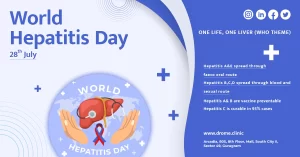Understanding and Combating Anaemia
Introduction
Anaemia is a prevalent health condition in India, affecting a significant portion of the population across various age groups. It’s characterized by a decrease in the total amount of red blood cells (RBCs) or haemoglobin in the blood, leading to reduced oxygen flow to the body’s organs. The condition manifests in various forms, influenced by numerous factors, including nutritional deficiencies, chronic diseases and genetic conditions. This blog aims to shed light on anaemia, focusing on its symptoms, causes, treatment options and prevention strategies.
Causes
- Iron deficiency anemia: This is the commonest type of anemia, due to very little iron in the body. Bone marrow needs iron to make hemoglobin. Without enough iron, the body can’t make enough hemoglobin for red blood cells.
- Vitamin deficiency anemia: The body needs folate and vitamin B-12 to make enough healthy red blood cells. A diet lacking in these key nutrients can result in the body not making enough red blood cells. Also, some people can’t absorb vitamin B-12. This can lead to vitamin deficiency anemia, also called pernicious anemia.
- Anemia of inflammation: Diseases causing ongoing inflammation can prevent the body from making enough red blood cells. Examples are cancer, HIV/AIDS, rheumatoid arthritis and kidney disease.
- Aplastic anemia: This rare, life-threatening anemia occurs when the body doesn’t make enough new blood cells. It can be caused due to infections, certain medicines, autoimmune diseases and being in contact with toxic chemicals.
- Anemias linked to bone marrow disease: Diseases like leukemia and myelofibrosis can affect how the bone marrow makes blood. The effects of these types of diseases range from mild to life-threatening.
- Hemolytic anemias: This group of anemias is from red blood cells being destroyed faster than bone marrow can replace them. Certain blood diseases increase how fast red blood cells are destroyed.
- Sickle cell anemia: This inherited condition is a type of hemolytic anemia. An unusual hemoglobin forces red blood cells into an unusual crescent shape, called a sickle. These irregular blood cells die too soon. That causes an ongoing shortage of red blood cells.
Symptoms
The possible symptoms of Anaemia include:
- fatigue
- weakness
- dizziness
- breathlesness
- pale or yellowish skin.
- Cold hands and feet.
- Headaches.
It’s crucial to understand that anemia’s manifestations can be subtle and vary from person to person.
Diagnosis & Treatment
Diagnosis:
A complete blood count (CBC) test is the primary diagnostic tool for anemia, helping determine the hemoglobin level and the size and shape of red blood cells.
Treatment:
The treatment for anemia in India revolves around addressing the underlying cause.
Iron supplements, vitamin B12 injections and dietary changes are standard treatments. Severe cases might require blood transfusions or medication to stimulate RBC production.
Complications
If not treated, anemia can cause many health problems, such as:
⦁ Severe tiredness. Severe anemia can make it impossible to do everyday tasks.
⦁ Pregnancy complications. Pregnant people with anemia may have more complications, such as premature birth.
⦁ Heart problems. Anemia can lead to a rapid or irregular heartbeat, called arrhythmia.
Prevention
Preventing anemia involves a multi-faceted approach:
Nutritional Interventions: Incorporating iron-rich foods like leafy greens, legumes, nuts, and fortified cereals.
Supplementation: Iron and vitamin supplements, particularly for high-risk groups.
Public Health Measures: Regular health check-ups, awareness campaigns and improved sanitation can mitigate anemia’s prevalence.
Conclusion
Anemia remains a significant public health challenge necessitating concerted efforts from individuals, healthcare providers, and policymakers. Awareness, timely diagnosis, and adopting preventive measures can significantly reduce the burden of anemia in Indian society.
FAQs on Anemia
Yes, most forms of anemia are treatable and can be cured with proper nutritional support and medical treatment.
No, anemia can be caused by a range of factors including deficiencies in vitamin B12 and folate, chronic diseases, and genetic conditions.
Yes, anemia can complicate pregnancy, leading to premature births and low birth weight.
Individuals at risk or experiencing symptoms should consult their healthcare provider for advice on monitoring and testing frequency.




